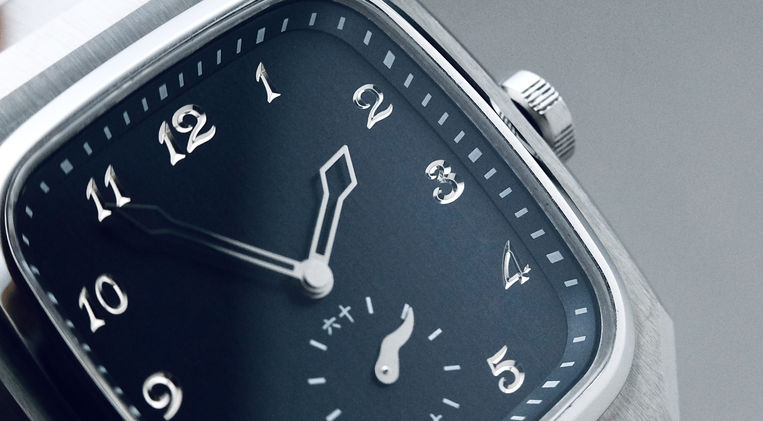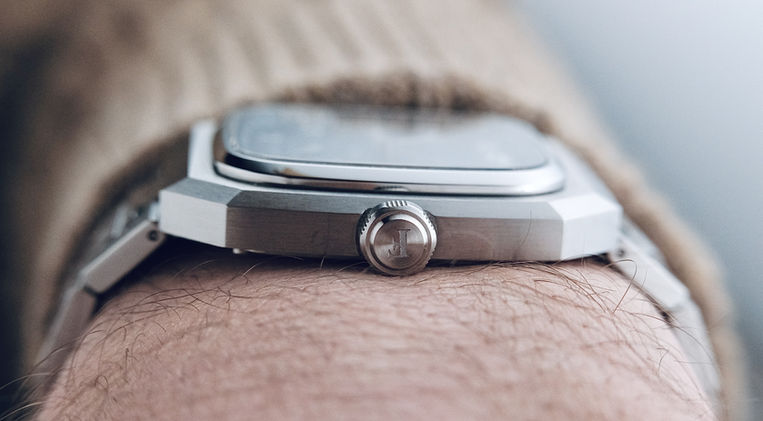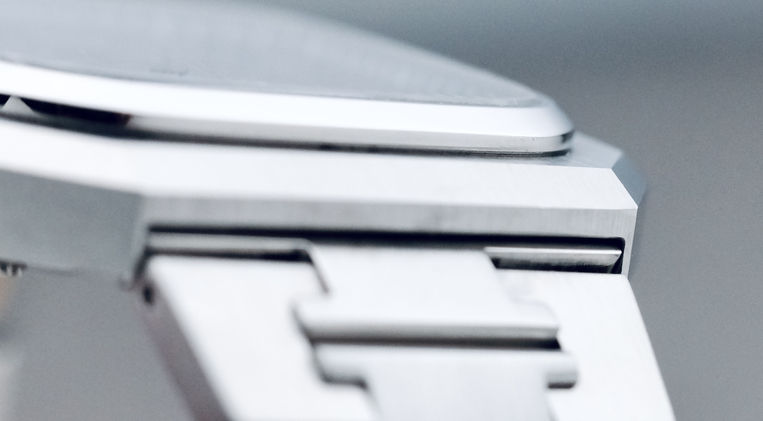Feynman VI
A Singular Horological Creation
What I and many people call “micro and independent horology” is just horology. We categorize small, young, and independent brands as being separate from mainstream brands because they operate differently from them. They are more creative, approachable (meaning the humans who run them are nice,) attainable (price-wise,) and more varied (in their offerings.) And the micro and independent brands of today were, a few years back, the exact same as what the dozens of smaller Swiss, French, and German brands of the 1950s-1980s were—that is companies buying off-the-shelf parts to make watches. What allowed collectors to tell them apart was the name printed on the dial. Otherwise, they made the exact same watches. In 2025, micro and independent brands create more unique designs and offer higher-value horology than the big names of the Swiss and Japanese industry. Period. Hot take.
What is even more surprising and noteworthy is that many micro/independent brands have become better at offering interesting dials and materials for less money than the big boys. The brand we’re going to highlight today is the perfect example of this trend. Feynman Timekeepers is based in Singapore and is a collective of designers and artisans who are passionate about horology. No two collections are the same and each one has a singular identity. The Feynman VI is the brand’s latest collection and can be best categorized as being an elegant everyday watch. It’s bold in the way it was designed and manufactured, it’s solid too and made of good components and tech. (I love the combo of singularity and quality.) It retails for $1,258 USD and comes in three versions: Midnight Blue, Daylight Silver, and Founder’s Edition (green.)

Specifications
I don’t know about you but specifications sometimes don’t matter to me as much as they generally do if I like the design of the watch. And I really like the way the Feynman VI looks. Though, as you will quickly realize, its specifications are related to its appearance and contribute to the feelings of “wow” and “awwww” that go through my mind and body when wearing the Feynman VI on my small French wrist. This model commands a certain wrist presence thanks to its semi rectangular case shape inspired from old TV dial watches which measures 38mm across, 40mm lug-to-lug, 8.64mm thick (wow!) and comes with a 24mm lug width. Note that the bracelet tapers to 16mm at the clasp—a 8mm taper is quite intense if I may say—though the bracelet is not integrated to the case although it appears so. It actually comes with quick-release spring-bars and the links are held together with annoying but reliable pins and collars.

Inside the Feynman VI we find a top-grade ETA 7001 manual wind caliber which beats at 21,600 BPH (3Hz) and has 40 hours of power reserve. It’s a handsome movement which can be admired thanks to a see-through sapphire case-back, the latter being held in place by four screws. And here comes the first feeling of wowness: the Feynman VI is very thin (8.64mm) and this fact combined with the see-through case-back and ETA movement with its fancy blue screws and jewels (I’m not being sarcastic, it’s really pretty) makes me feel I’m holding a high-end piece of Swiss horology. Yes, my simple male brain equals thin case + pretty movement with luxury horology and however silly this might be, that’s how it feels and I like it. And what is neat about the Feynman VI is the fact that we don’t have to pay high-end Swiss prices for this model. (Remember it costs $1,258 USD.)

Being thin and equipped with a see-through case-back you can easily imagine that this model doesn’t have Planet Ocean-like water resistance and you would be right. Though I would argue that its 50-meter depth-rating is good for this type of watch. It is likewise logical to imagine a push/pull crown and not a screw-down one, and this one measures 6.2mm which renders it small (elegant) compared to the case profile. Moreover, you would be right to assume that the top crystal is made of sapphire since we find sapphire on the back. The steel case comes with a refined alternation of brushed and polished surfaces (which I will get back to shortly) and lume is something you should definitely and logically not expect to find here.

Design
Although at first glance the Feynman VI looks like an integrated sports model, it isn’t one and that’s a good thing to me because I don’t like the idea of being stuck with bracelets. The design and general allure of the Feynman VI would naturally land itself to being worn on a strap—which is not an option for now but might hopefully be one in the future—but because the lug area is designed traditionally this means you can pair this watch with any 24mm (cough cough) strap you may have at home. (I don’t.) Which brings us to the first point of interest of the design of this watch: the bracelet. Phew, I love the way this thing looks and feels on the wrist. The “H” shaped center links are mounted on either side of the outer links and fully articulate, meaning the bracelet contours itself to your wrist. All links are light and because of their construction, they jiggle a little bit like vintage watches. I for one love this.

And though the bracelet of the Feynman VI does not fully integrate with the case, it appears so, which means the former flows beautifully with the latter. To me, the case actually doesn’t look like a TV-shaped case but more akin to that of a modern Maen Manhattan which itself was inspired by something else (I should have written down this piece of information.) In other words, it's mostly rectangular with pronounced angular corners, and brushed chamfers which run all around the case. Being almost as wide as it is long, the case is, again, visually impressive but the choice of adorning most of its parts with a fully brushed treatment means it doesn’t excessively stand out. Only the fixed bezel received a polished treatment which aids in not only bringing our attention to the dial but also to visually reduce the overall footprint of the watch head.

The dial then is quite impressive and interesting as well. It has the same shape as the case and therefore as the bezel, although Feynman managed to lessen its squarish appearance by giving it a more rounded one by way of subtle shape shifting through the bezel. (The kind of design work which is typically found in creations from larger brands—much less so for micro/independent brands—which contribute to making the Feynman VI look high-end.) All of this brings our attention then to the dial with its subtle but elegant vertical brushing, silver paint-filled embossed Breguet-style hour markers, and skeletonized hands. I love the absence of branding on the dial—though the brand name is printed south on the angled rehaut—which helps in focusing our attention on this magnificent harmony of shapes.

The Heart of the Matter
At the heart of the matter is the fact that Feynman created a masterpiece of independent horology which is attainable to many of us. I do find that $1,258 USD is a fair price to ask for this horological creation as it is well-made, with good components, and that it is visually unique enough to stand out from the generally fierce independent competition whilst being able to fly-under-the-radar in the eyes of enthusiasts and amateur collectors. The brand evidently thought out all aspects of its design, giving all of them equal attention and importance. So much so, actually, that the Feynman VI looks visually coherent as the markers and hands naturally integrate with the dial finish and shape just like the case and bezel seamlessly flow with the bracelet and vice versa. In some aspects, the VI appears modern and in others, vintage. And that is a difficult balance to strike.

Moreover, the Feynman VI like many models from the brand’s catalog, comes with its own design language and cultural queues which connect them with the birth country of its founder. From the Chinese symbols on the sub-register for the running seconds (which read 60 and 30) to the lizard-tail shaped seconds hand. The latter has several meanings actually. First, friends of the founder Lim Yong Keong told him of the auspicious meaning of this symbol in Chinese culture, that of rebirth and rejuvenation. Second, and subsequently, the fact that visually the seconds hand appears to have broken off from the main handset and to continue its life, metaphorically, further down. What is impressive to me is the fact that these unique design details were seamlessly and elegantly integrated within the overall dressy appearance of this watch.

Conclusion
As mentioned in the introduction, what we refer to today as micro and independent horology is much more than that. Micro and independent brands are creative and bold, two attributes legacy brands do not have since they must respect their own heritage. While many watch enthusiasts and collectors seek brands that have a storied past, those who don’t care for it will therefore be more open to the idea of owning niche and singular timekeeping devices like this Feynman VI. Within its category of dress/everyday watches, there isn’t that much competition at this price range yet, as far as I know but I don’t know what I don’t know. Ah, clever me.
So go check out Feynman’s website and the VI collection in its three color variations.
Thanks for reading.














































